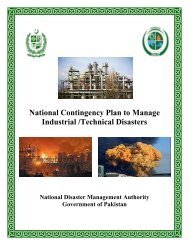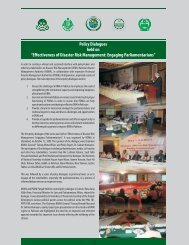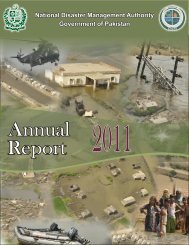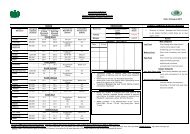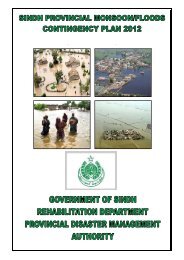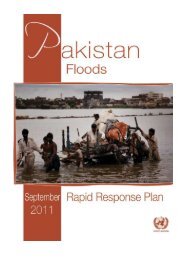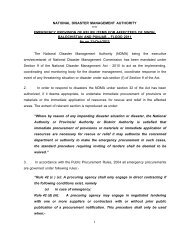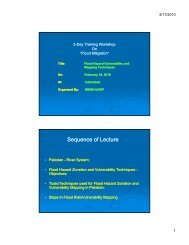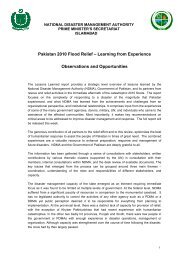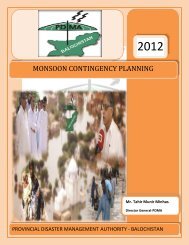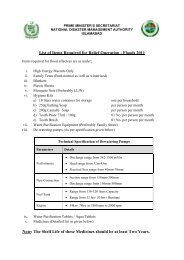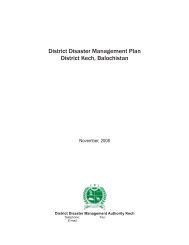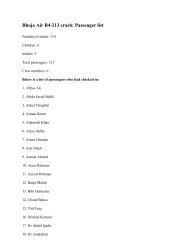National Disaster Response Plan (NDRP) March 2010 - NDMA
National Disaster Response Plan (NDRP) March 2010 - NDMA
National Disaster Response Plan (NDRP) March 2010 - NDMA
You also want an ePaper? Increase the reach of your titles
YUMPU automatically turns print PDFs into web optimized ePapers that Google loves.
53<br />
(f) Representatives from Civil Society /Local Councils<br />
b. Initial Assessment Techniques. First hand information may be gathered in the<br />
area using the following techniques:-<br />
(1) Field visits of the affected part.<br />
(2) Review of secondary information if available (e.g. socio-economic conditions,<br />
population, Maps etc).<br />
(3) On site visual assessment e.g. walk through affected area, observations during<br />
interviews etc.<br />
(4) Interview of community, religious leaders, groups and focus group interviews<br />
affected by disaster.<br />
(5) Discussions with officials, elected representatives and NGOs/CBOs.<br />
c. Whichever assessment techniques are used, these should be adapted to the urgency<br />
of the situation and the degree of detail and accuracy needed to mount an appropriate<br />
response.<br />
d. Organizing Initial Rapid Assessment<br />
(1) Clarify the purpose of the initial rapid assessment.<br />
(2) Prepare Terms of Reference (TOR) with assessment team and make sure that<br />
TOR is understood by the team.<br />
(3) Prepare assessment questions and checklist before field work.<br />
(4) Team composition should include women.<br />
(5) Brief training of the team about rapid assessment formats.<br />
(6) Clarify roles and responsibilities of team.<br />
(7) Use standardized processes and report format.<br />
(8) Report should be written in simple and clear language.<br />
5. Search and Rescue. The first 12 hours of any disaster are regarded as the critical hours.<br />
This means that the sooner the search and rescue operations start the better are the chances for<br />
survival of entrapped people. A trained and equipped team of professionals is able to carry out timely<br />
and effective coordinated operations to locate and rescue persons in distress and deliver them to a<br />
place of safety.<br />
a. Definition. Search and Rescue are two separate functions.<br />
(1) Search. To carefully look in order to find someone missing or lost during a<br />
disaster.<br />
(2) Rescue. To safely remove a trapped casualty from confinement, under<br />
rubble due to disaster.<br />
b. Objectives. The objectives of search and rescue are to:-<br />
(1) Safeguard the life of a rescuer - as he/she is the most important person in a<br />
rescue attempt.



